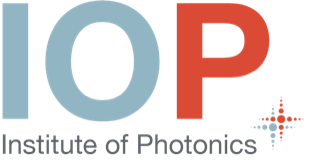Two researchers from IOP, Dr. Huilong Ren, Prof. Xiaoying Zhuang, have been awarded the Bathe Award 2023 by the Computers & Structures journal as the best article for the period 2021-2022 for their coauthored work "Multi-connected boundary conditions in solid mechanics and surgery theory".
The K.J. Bathe Award is annual award for the Best Paper by a Young Researcher in the Field of Computational Engineering. This award is named after Professor Klaus-Jürgen Bathe, Professor of Mechanical Engineering at Massachusetts Institute of Technology. He is considered to be one of the pioneers in the field of finite element analysis and its applications including the creator of software ADINA.
Dr. Ren Huilong is engaged in the study of Peridynamics, numerical methods for partial differential equations, and fracture mechanics. He proposed dual-horizon Peridynamics, which broke through the limitation of the constant horizon of peridynamics and solved the theoretical problem of multiscale analysis of peridynamics. He introduced the framework of variational method and weighted residual method for non-local theory, and proposed a new general numerical method for solving partial differential equations - nonlocal operator method. He published a monograph titled 'Computational Methods Based on Peridynamics and Nonlocal Operators: Theory and Applications‘.
Prof. Xiaoying Zhuang’s key research area is machine learning and computational mechanics for the modelling and design of novel photonic systems, metamaterials and nanostructures. She has developed numerous innovative and robust numerical methods including level-set methods, partition-of-unity methods (such as mesh-free methods, XFEM formulations, phantom node methods and finite cover methods), multiscale methods, phase field models and error-driven adaptive methods developed and implemented. She also has experience with coupled (hydro-mechanical, thermo-mechanical, thermo-hydro-mechanical and electro-mechanical) problems, uncertainty analyzes/uncertainty quantification as well as inverse methods and optimization processes. She has applied innovative numerical methods to solve complex problems in engineering, solid state physics, and materials science. The research focus of Sofja Kovalevskaja Project funded by the Humboldt Foundation is the modeling, optimization and development of polymer composite materials. Her onging ERC Starting Grant is focused on the optimization and development of piezoelectric and flexoelectric nano-energy converters.
Abstract:
Boundary conditions are critical to the partial differential equations (PDEs) as they constrain the PDEs ensuring a unique and well defined solution. Based on combinatorial and surgery theory of manifolds, we develop multi-element boundary conditions as the generalization of the traditional boundary conditions in classical mechanics: Dirichlet boundary conditions, Neumann boundary conditions and Robin boundary conditions. The multi element boundary/domain conditions glue the physical quantities at several points of different boundaries or domains on the fly, where the point-to point correspondence (point mapping) on several boundaries are established on the common local coordinate system and the interactions are realized through the ‘‘wormhole” (i.e. the constraint equations). The study on weak form shows that the general multi-element boundary conditions are inconsistent with the variational principle/weighted residual method. To circumvent this dilemma, a numerical scheme based on augmented Lagrange method and nonlocal operator method (NOM) is proposed to deal with the mechanical problem equipped with general multi-element boundary conditions. Numerical tests show that the structures have completely different deformation modes for different multi-element boundary conditions.
Reference:
- https://www.sciencedirect.com/journal/computers-and-structures/about/awards
- https://www.bhvt.uk/batheaward2023/
- Ren, Huilong, Xiaoying Zhuang, Cosmin Anitescu, and Timon Rabczuk. "Multi-connected boundary conditions in solid mechanics and surgery theory." Computers & Structures 251 (2021): 106504.








